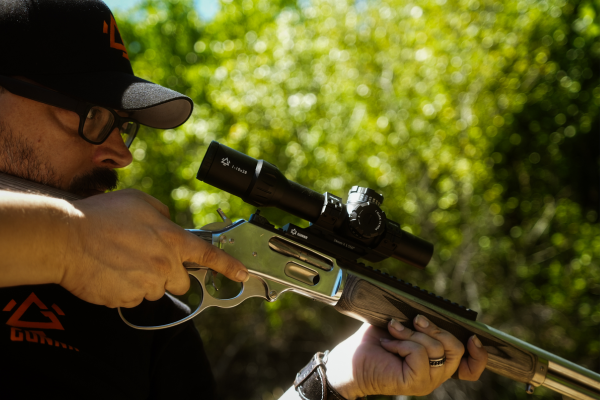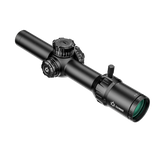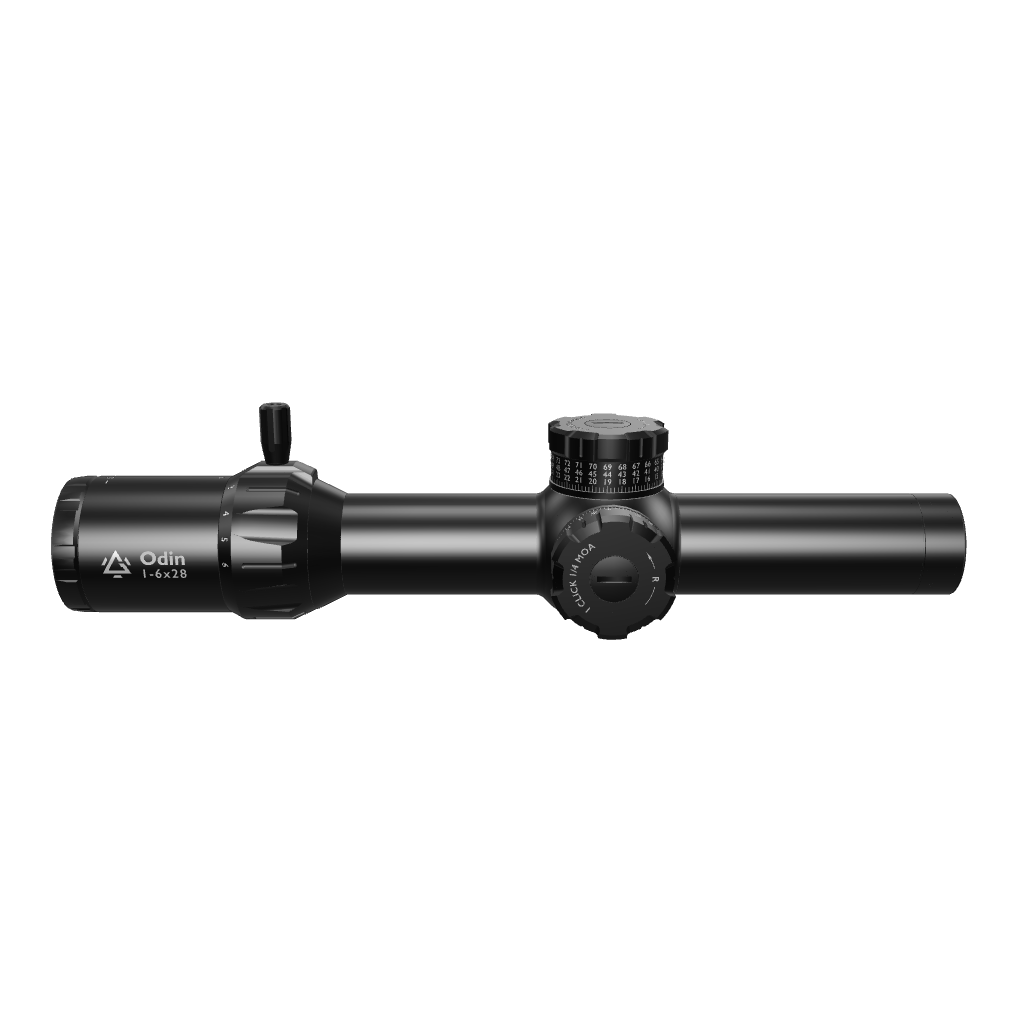Choosing The Best LPVO for .308: What To Look For
There are many reasons why people like .308 Win, but it mostly comes down to four factors: versatility, accuracy, reasonable recoil, and wide availability of ammunition and rifles.
So, when choosing an LPVO for your .308 Win, it may look like you have numerous options, and maybe you do.
But there are two challenges when it comes to choosing an LPVO for a .308 Win. First, you want a model that best matches the .308 in terms of versatility, accuracy, and recoil. Second, you want an LPVO that is the best fit for the purpose to which you put your .308.
To help you decide which LPVO is the best for your .308 Win, we have split the requirements into three priority tiers:
- Top priority tier (Must have for .308)
- Medium Priority ( Depending on Your Use Case)
- Lower priority features (Nice to Have)
Remember, most LPVOs will do a decent job, but only a few will fit best.
Let's explore!
Top Priority: Must-Have Features for an LPVO for .308.
1. Sufficient Recoil Rating/Durability
If the LPVO cannot handle .308 recoil, everything else is irrelevant.
As pivotal as this requirement is, it is not really that difficult. In an ~8 lb rifle, .308 generates roughly 15-20 ft-lb of free recoil energy. That's nowhere near the levels that should challenge a well-built LPVO.
Most decent LPVOs can survive 500-1,000 rounds of .308 with no zero shift. Premium models even routinely handle 5,000+.
However, you don't want to assume. If the LPVO is from a reputable maker and is either explicitly “.308/7.62 rated” or lists ~1,000 g shock resistance, you should be good.
2. Build quality
The build quality of an LPVO is an indication of how durable it is, and whether it can handle .308 recoil consistently. For an optic, being able to handle recoil is one thing: being able to handle recoil consistently in the long term is another. That is why build quality matters
Even without explicit information, you can always tell if an LPVO is capable of handling .308 recoil. The following indicators will tell you whether an LPVO can handle .308 recoil:
- It has a one-piece main tube (30 or 34 mm).
- The erector lenses are robust and firm
- The lenses are properly secured and look solid.
- It has an effective return-to-zero tracking (a zero-stop function)
Generally, explicit information from the manufacturer, like “Rated for heavier cartridges” (e.g., .300 WM/.338 LM), is a good proxy for durability.
3. A Fitting Magnification range
Again, shooters love the .308 because it is extremely versatile; you can use it as a 0-300 yard brush gun or a 600+ yard precision tool.
If you are choosing an LPVO for .308 Win, you want to make sure that the magnification range of the LPVO matches your engagement distances. LPVOs generally go from 1-4x, 1-6x, 1-8x to 1-10x.
- For .308 Win long-range shooting, choose an LPVO with higher top magnification (typically 1-8x or 1- 10x).
- For mid-range (100–400 yards), you probably want to go with a 1-8x LPVO. It gives you enough zoom for target ID while keeping a wide field of view. 1-10x will also go well.
- For short-range shooting (under 100 yards): A 1-4x or 1-6x LPVO is fastest. It gives you a red-dot-like view at 1x and is great when you need quick target transitions.
4. Reticle Type and FFP/SFP Choice
Should you choose an FFP LPVO or an SFP LPVO for .308 Win? It depends on whether you are a range shooter who will be engaging steel plates at 600+ yards or a three-gun guy whose steel plates are typically 25-50 yards away.
In any case, the critical deciding factor here is precision and holdovers at medium to long range.
- For precision or long-range shooting, where you use ballistic holds often, you need an FFP reticle.
- For close to mid-range, faster target acquisition, and a cleaner sight picture, an SFP reticle is a better match.
If you are a shooter who does all the above, a First Focal Plane LPVO will, overall, give you more value for money. FFP gives more flexibility for a mix of close and long-range, frequent use of holds/distance estimation.

Medium Priority Features (To Enhance usability and performance)
1. Glass quality
Most hunters use a .308 within 300-500 yards, but an expert shooter will probably reach an effective range of about 800-100 yards with it.
The point is, when you have a rifle that has the capacity to reach so far out, you need an LPVO with top-quality glass, as good as your budget allows. For most LPVOs, once you go above 400 yards, target ID, precision, everything all comes down to the quality of the glass.
The importance of optical clarity and good lenses cannot be overemphasized. Look for an LPVO with ED glass from a reputable manufacturer. Test and check reviews just to confirm.
2. Eye relief and eye box
Scope bite is a risk with a .308, if your LPVO has short eye relief or a tight cheek weld at higher magnification. For a .308 Win LPVO, ideal eye relief is at least 3.5-4 inches to avoid scope bite while still getting a full sight picture.
In doubt, you can always consult a scope eye relief distance chart for directions and clarifications.
3. Field of view
For a .308 Win LPVO, a wide field of view (FOV) is best so you can spot and track targets quickly, especially at close to mid-range. Ideally, you want an LPVO with at least 100ft at 100 yards and the highest possible FOV at max zoom.
- At 1x: Aim for ≥ 100 ft at 100 yards
- At max zoom: Look for the widest FOV available in that magnification class.

Lower Priority Features (Nice-to-Have / Convenience)
1. Weight and length of the LPVO
- Heavier LPVOs help stability and are usually more sophisticated, but reduce speed.
- Lighter LPVOs are great for speed, but some features may be absent.
The key is to know what you want and find the best value for your money.
2. Mounting Compatibility
- Most .308 LPVOs use standard 30mm/34mm tubes. You want a mount that is compatible.
- Cantilever mounts are generally the go-to.
3. Parallax: Fixed or Adjustable?
- Most LPVOs have fixed parallax at 100yards, which is generally okay for general hunting and shooting.
- If you are shooting beyond 600 yds, you might want adjustable parallax.
4. Price-to-performance and warranty
- Always check the warranty.
- A lifetime warranty is a sign of confidence and trust
5. Check User reviews
- User reviews are always helpful,
- But keep in mind that real-world testing and specs matter more.
Recommended LPVOs for .308 Win
For .308 Long Range Shooting
For .308 Win long-range shooting, choose an LPVO with higher magnification, an FFP reticle, durable build, and clear class and precise adjustments for spotting targets far out. Consider the Odin 1-10x FFP LPVO, which has the following features that will match:
- Higher top magnification 1-10x.
- An FFP reticle, Half Christmas Tree Design for accurate holdovers at any zoom.
- Durable 7075 aluminum build and good recoil resistance for .308’s kick, with a reliable zero-stop function
- Clear German Schott ED glass, multi-coated.
- Tactile turrets for precise adjustments.
For .308 Mid Range Shooting
For .308 Win Mid-range, the Odin 1-8x FFP will also work great, giving you many of the same features, with enough zoom for target ID while keeping a wide field of view. The FFP reticle will give you a bit of an upper hand when it comes to precision.
For .308 Short Range Shooting
For .308 short-range shooting, you can also consider the Odin 1-8x FFP LPVO. It offers a red-dot-like view at 1x and quick target transitions.
Final Thoughts
Again, the two main challenges when it comes to choosing an LPVO for a .308 Win. are to get an LPVO model that best matches the .308 in terms of versatility, and is simultaneously the best fit for the purpose to which you put your .308.
Gunnr's Odin LPVOs are a great option, and after reading this guide, you have everything you need to make the best decision.
However, you can always refer to an LPVO buying guide for more tips on how to buy an LPVO.







